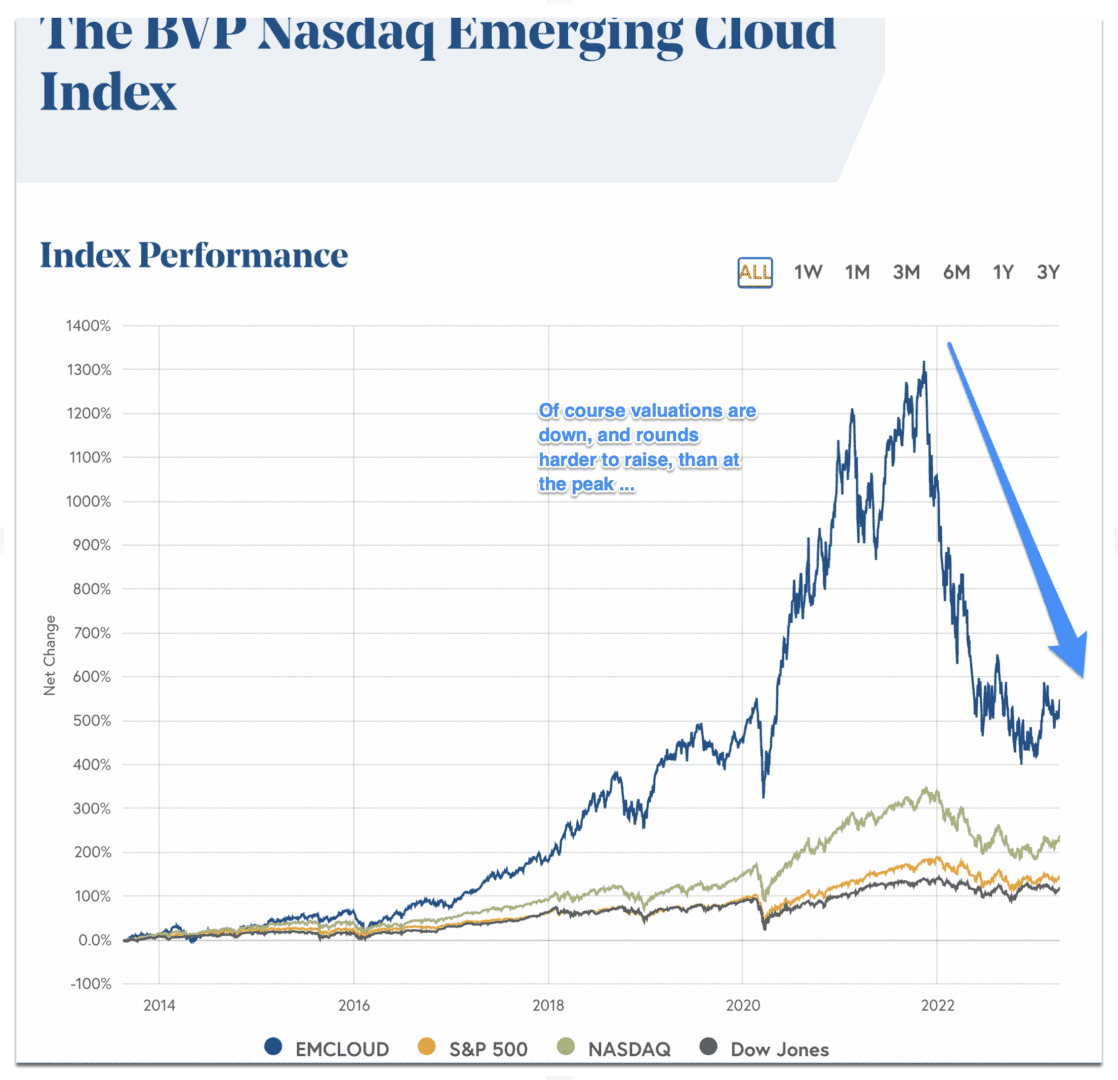Quick guide to VC fundraising in Q2'23:
VCs now think everything is expensive
Especially, the ones that invested in everything 18 months ago
— Jason ✨Be Kind✨ Lemkin (@jasonlk) April 2, 2023
So fundraising is a lot harder these days, especially Series A and later. It sort of has to be. The public markets for SaaS companies are down 70%+ from their peaks in 2021. So fundraising sort of has to be, too:

So don’t make unforced errors in fundraising:
Here are 9 simple tips that are easy to implement — and almost 100% guaranteed to impact your odds of raising seed or Series A funding:
- Don’t overplay your hand. I am still seeing this way too often these days. Don’t run a “1 week process” if you aren’t sure you can close a round in a week — especially these days. Folks will see through it. Don’t ask for a crazy high valuation in 2023. Don’t tell folks a round is almost full if it isn’t. You will likely just lose with these games in 2023.
- If your existing investors have a strong brand and aren’t positive on you, it can be much harder to raise. At a minimum, keep them in the loop. Don’t just ignore them after they write a check. The converse is also true. Your existing investors are often your best source of leads for the next round of funding.
- It has to be the CEO that pitches the VCs. It just has to be. Don’t send your co-founder or your COO or your CFO or whatever. For most investors, that’s almost an immediate No.
- The initial decision is made within 20 minutes of the first face-to-face, be it Zoom or IRL. Make it exciting, speak with data, and get to the point. The initial Yes, Maybe, or No decision is made within 20 minutes. So save slides 20–200 for questions and back-up.
- Making stuff up is death, or close to it. If you don’t know the answer, just say that, it’s fine. But make something up and VC knows the answer is otherwise … that’s almost always a No right there.
- You have to know your competition. Every great salesperson and CEO does. Learn more here if you don’t.
The best founders know the competition cold
Maybe the most fatal thing in a VC pitch is not knowing the competition
Disrespecting them can be a close second
— Jason ✨Be Kind✨ Lemkin (@jasonlk) November 20, 2021
- Cold outreach works. It just has to be very, very good. Everyone reads email. But if you are going via cold outreach instead of a warm intro, make the email amazing. Simple, but metrics-filled and to the point. Hide nothing. Don’t ask for coffee. Get to the point. This is your one shot. At least, there is a decent chance it will be read if the headline is exciting and of interest. A bit more on cold email to VCs here.
- Slow growth is death in fundraising. Maybe wait to raise until your growth is stronger. If you just aren’t growing quickly enough to support a venture investment, it can be better to wait and go out in a few months. At least, you need to have 3–4 good months strung together in a row to show a pattern (and hope).
- Your existing investors often save some money for a second check. So treat them that way. Most institutional investors can give you at least a little more money if you are doing OK and need it. So again, keep them in the loop. Otherwise, they won’t reserve this money. A bit more here.
And finally … bonus point 10 for the current era:
- Be yourself, be honest, and share the challenges along with the great stuff. A top “sin” in fundraising is acting like someone else. Be yourself. Be true. 50% of fundraising is the VCs getting to know the CEO. It’s OK to over-index on the topic you are most passionate about (product, sales, marketing, etc.). It’s OK if the presentation doesn’t look exactly like some deck you saw on Business Insider. Make it all great. Rehearse. Take it seriously. But don’t not be yourself.
(Note: an updated SaaStr Classic post)

